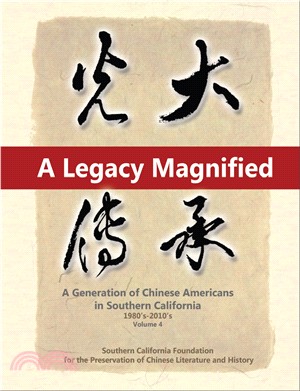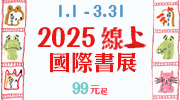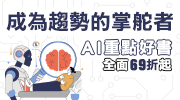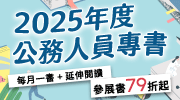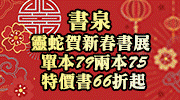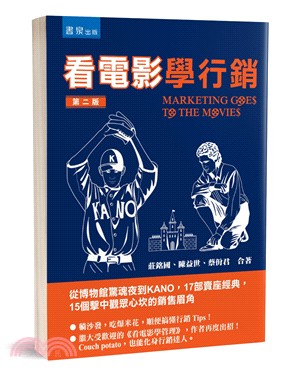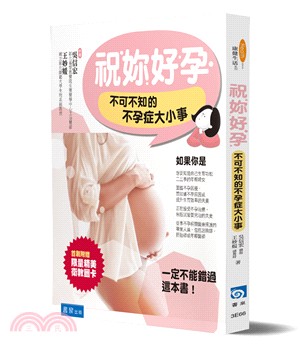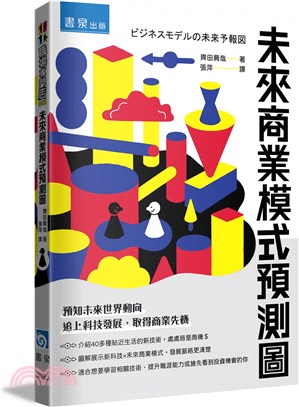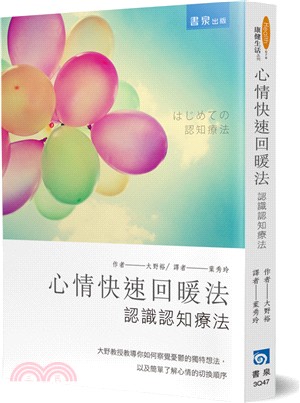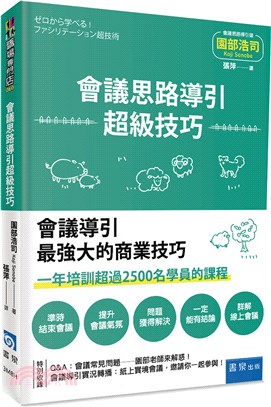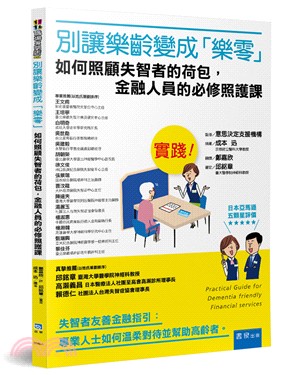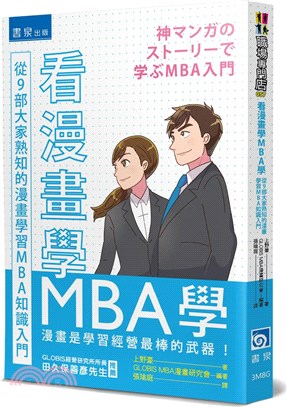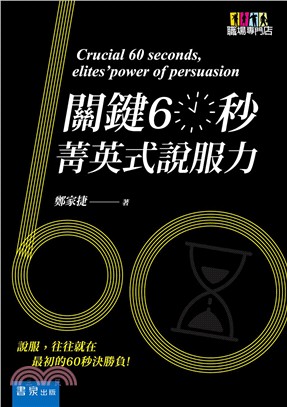光大傳承─南加州華人三十年史話:第四卷(全四卷,國際英文版)
商品資訊
系列名:域外漢學
ISBN13:9781625034199
出版社:漢世紀數位文化EHGBooks
作者:陳十美(總編輯); 南加華人文史保存基金會(Southern California Foundation for the Preservation of Chinese Literature and History)
出版日:2017/12/01
裝訂/頁數:平裝/364頁
規格:29.7cm*21.6cm (高/寬)
商品簡介
作者簡介
目次
相關商品
商品簡介
A Legacy Magnified: A Generation of Chinese Americans in Southern California, 1980’s-2010’s (南加華人三十年史話英文版) is a monumental publication jointly authored by a team of renowned group of writers consisting of 17 chapters, nearly 1 million words, and more than 1,300 photographs, many of which are collected from historical archives. It is an unprecedented endeavor undertaken by more than 500 volunteers who were privileged to have witnessed the drastic and amazing transformation of Chinese American communities in Southern California during the critical three decades, from the 1980’s to the 2010’s.
This handsome volume encompasses an historical account of multifarious realms of community development, including various aspects of culture, history, political participation, economic growth, businesses, education, language, sports, mass media, science and technology, scholarly research, literature, music, dance, theatre and other performing arts, among other subjects.
This book is substantial, and is dedicated to “All Chinese of past, present, and future generations who contribute to the world culture by incorporating the quintessence of Chinese civilization and their heritage.”
Postscript
A Crystal Formed Out of 900,000 Beads of Sweat
Following 1,460 days of toil and labor, an estimated 1,460 person-visits to the small meeting room of the American-East Asian Cultural and Educational Foundation, and consuming over 1,460 boxes of bento, A Legacy Magnified: A Generation of Chinese Americans in Southern California, 1980’s-2010’s, containing over 900,000 Chinese characters, is finally available in print.
In the past 30 years, the Chinese in Southern California excelled in their respective fields of expertise and in all realms of activities, including culture, politics, economy, education, sports, mass media, business, science and technology, academics, arts, literature, music, dance, drama, food, and service industry. They have thrived and continue to flourish. To write a book like A Legacy Magnified covering all these aspects with limited human and financial resources and working under time constraints would have been quite impossible.
Fortunately, when I proposed to write a book like this, I received warm responses from the Chinese community. More than a hundred individuals signed up as volunteers, and donations streamed in. I was greatly encouraged. While I was excited about the prospect, I felt that the onus of my responsibility was heavy. In order to live up to the expectations of my supporters, I treaded with fear and trepidation as if I was walking on thin ice. I sketched the book’s plan and structure and proactively commenced the work.
Initially I thought we could publish the book after collecting enough articles and material within four months. Unexpectedly, however, we continue to receive more and more material from all sources. It has taken us four years, instead, to produce this volume after we have incorporated all available information and data. As a result of the enthusiastic response from the Chinese American communities, the original plan to divide the book into fourteen chapters in approximately 60,000 Chinese characters, was once expanded to about 2,000,000 characters. We have managed, finally, to reduced the book to approximately 900,000 characters in seventeen chapters in its current form and shape. Dr. San-pao Li, Professor Emeritus, a historian by profession, thoughtfully offered the capstone of this book with its encompassing title Guang Da Chuan Cheng 光大傳承(Legacy Magnified), highlighting the historical significance of this publication.
During this period of over four years of research, exploration, and visitations, we solicited and received more than 300 articles. We collected oral history of over 500 individuals. In addition, we also collected over 200 books and publications related to our subject, over 1,000 newspaper clippings, over 1,000 questionnaires from Chinese American families, over 1,000 precious photos, and more than 2,000 pieces of contact information of outstanding personalities in the Chinese American community. In the meanwhile, we developed and launched a new web site that will enable us to continue to update our content in the future. In the process of compiling this work, we received support from University of California, Los Angeles besides the Chinese community. UCLA East Asian Library launched a special project and employed additional staff to further document the oral histories of some eminent Chinese Americans in order to archive them as raw research material for in-depth scholarly studies in the future.
As I was sorting out the nearly 2,000 telephone numbers collected, I recall how tirelessly we went out of the way to search for relevant information. I recall how our editorial team collected, reviewed and edited the manuscripts contributed by over 100 outstanding Chinese American, and how assiduously they reconciled the innumerable factual contradictions, verified, sorted out, complied, reviewed and fixed the errors. I recall how our volunteers rendered their service so willingly and selflessly. Touched by the dedication of all these individuals, I became frequently oblivious of time, skipping meals and sleep. I recall the many warm and thoughtful encouragements offered as well as skepticisms of all kinds. I recall getting up in the countless early mornings, still exhausted and fatigued, yet with strong conviction and faith, I struggled to continue the tasks before me. I recall the four years during which I neglected inadvertently my family and many of the administrative responsibilities of the school of which I am the principal. I recall the unparalleled commitment displayed by my fellow workers in the modest editorial staff office located at the back of the Sunshine Education Center. This project of immense scope is now finally completed. The 900,000 Chinese characters contained in this book represent, indeed, the crystallization of 900,000 beads of sweat. While my heart dances with joy, I find myself in fear and trepidation. Although I feel that I have exhausted my utmost, the limited space available in this book cannot possibly comprehensively document every marvelous detail of the splendid history of the Chinese immigrants in Southern California during the past half century. Errors are understandably unavoidable, but what makes me feel uneasy most is the possibility of inadvertent omissions of much of the accomplishments of many outstanding individuals. The only comfort is that we have developed and launched a website through which we can always supplement and update information received in the future. I hope earnestly that our readers here and abroad will continue to offer constructive comments and suggestions.
Finally, before this book goes to print, I wish to extend my profound gratitude to all individuals and Chinese American organizations and their leading officers for their guidance, suggestions as well as their financial contributions during the entire process of its preparation and production. The Chinese language media spared no space to report to their readers or viewers details of every stage of this project. I remain deeply touched. The American-East Asian Cultural and Educational Foundation and the North America Chinese Writers’ Association in Los Angeles北美洛杉磯華人作家協會, of both which I am a member, contributed significantly during the initial phase of this project. The unstinting support that I have received from the board members of the Southern California Foundation for the Preservation of Chinese Literature and History Inc.南加華人文史保存基金會, all of whom are eminent individuals, the sustained encouragement of all the teachers, students, and their parents alike at Sunshine Education Center, and the generous support from my family and friends will forever be remembered. Last but not the least, I would like to acknowledge with profound gratitude and appreciation the dedication, commitment, and diligent effort of each and every participant in this project and its staff. My sincerest gratitude to you all!
May Chen
November 31, 2013
Los Angeles, CA
This handsome volume encompasses an historical account of multifarious realms of community development, including various aspects of culture, history, political participation, economic growth, businesses, education, language, sports, mass media, science and technology, scholarly research, literature, music, dance, theatre and other performing arts, among other subjects.
This book is substantial, and is dedicated to “All Chinese of past, present, and future generations who contribute to the world culture by incorporating the quintessence of Chinese civilization and their heritage.”
Postscript
A Crystal Formed Out of 900,000 Beads of Sweat
Following 1,460 days of toil and labor, an estimated 1,460 person-visits to the small meeting room of the American-East Asian Cultural and Educational Foundation, and consuming over 1,460 boxes of bento, A Legacy Magnified: A Generation of Chinese Americans in Southern California, 1980’s-2010’s, containing over 900,000 Chinese characters, is finally available in print.
In the past 30 years, the Chinese in Southern California excelled in their respective fields of expertise and in all realms of activities, including culture, politics, economy, education, sports, mass media, business, science and technology, academics, arts, literature, music, dance, drama, food, and service industry. They have thrived and continue to flourish. To write a book like A Legacy Magnified covering all these aspects with limited human and financial resources and working under time constraints would have been quite impossible.
Fortunately, when I proposed to write a book like this, I received warm responses from the Chinese community. More than a hundred individuals signed up as volunteers, and donations streamed in. I was greatly encouraged. While I was excited about the prospect, I felt that the onus of my responsibility was heavy. In order to live up to the expectations of my supporters, I treaded with fear and trepidation as if I was walking on thin ice. I sketched the book’s plan and structure and proactively commenced the work.
Initially I thought we could publish the book after collecting enough articles and material within four months. Unexpectedly, however, we continue to receive more and more material from all sources. It has taken us four years, instead, to produce this volume after we have incorporated all available information and data. As a result of the enthusiastic response from the Chinese American communities, the original plan to divide the book into fourteen chapters in approximately 60,000 Chinese characters, was once expanded to about 2,000,000 characters. We have managed, finally, to reduced the book to approximately 900,000 characters in seventeen chapters in its current form and shape. Dr. San-pao Li, Professor Emeritus, a historian by profession, thoughtfully offered the capstone of this book with its encompassing title Guang Da Chuan Cheng 光大傳承(Legacy Magnified), highlighting the historical significance of this publication.
During this period of over four years of research, exploration, and visitations, we solicited and received more than 300 articles. We collected oral history of over 500 individuals. In addition, we also collected over 200 books and publications related to our subject, over 1,000 newspaper clippings, over 1,000 questionnaires from Chinese American families, over 1,000 precious photos, and more than 2,000 pieces of contact information of outstanding personalities in the Chinese American community. In the meanwhile, we developed and launched a new web site that will enable us to continue to update our content in the future. In the process of compiling this work, we received support from University of California, Los Angeles besides the Chinese community. UCLA East Asian Library launched a special project and employed additional staff to further document the oral histories of some eminent Chinese Americans in order to archive them as raw research material for in-depth scholarly studies in the future.
As I was sorting out the nearly 2,000 telephone numbers collected, I recall how tirelessly we went out of the way to search for relevant information. I recall how our editorial team collected, reviewed and edited the manuscripts contributed by over 100 outstanding Chinese American, and how assiduously they reconciled the innumerable factual contradictions, verified, sorted out, complied, reviewed and fixed the errors. I recall how our volunteers rendered their service so willingly and selflessly. Touched by the dedication of all these individuals, I became frequently oblivious of time, skipping meals and sleep. I recall the many warm and thoughtful encouragements offered as well as skepticisms of all kinds. I recall getting up in the countless early mornings, still exhausted and fatigued, yet with strong conviction and faith, I struggled to continue the tasks before me. I recall the four years during which I neglected inadvertently my family and many of the administrative responsibilities of the school of which I am the principal. I recall the unparalleled commitment displayed by my fellow workers in the modest editorial staff office located at the back of the Sunshine Education Center. This project of immense scope is now finally completed. The 900,000 Chinese characters contained in this book represent, indeed, the crystallization of 900,000 beads of sweat. While my heart dances with joy, I find myself in fear and trepidation. Although I feel that I have exhausted my utmost, the limited space available in this book cannot possibly comprehensively document every marvelous detail of the splendid history of the Chinese immigrants in Southern California during the past half century. Errors are understandably unavoidable, but what makes me feel uneasy most is the possibility of inadvertent omissions of much of the accomplishments of many outstanding individuals. The only comfort is that we have developed and launched a website through which we can always supplement and update information received in the future. I hope earnestly that our readers here and abroad will continue to offer constructive comments and suggestions.
Finally, before this book goes to print, I wish to extend my profound gratitude to all individuals and Chinese American organizations and their leading officers for their guidance, suggestions as well as their financial contributions during the entire process of its preparation and production. The Chinese language media spared no space to report to their readers or viewers details of every stage of this project. I remain deeply touched. The American-East Asian Cultural and Educational Foundation and the North America Chinese Writers’ Association in Los Angeles北美洛杉磯華人作家協會, of both which I am a member, contributed significantly during the initial phase of this project. The unstinting support that I have received from the board members of the Southern California Foundation for the Preservation of Chinese Literature and History Inc.南加華人文史保存基金會, all of whom are eminent individuals, the sustained encouragement of all the teachers, students, and their parents alike at Sunshine Education Center, and the generous support from my family and friends will forever be remembered. Last but not the least, I would like to acknowledge with profound gratitude and appreciation the dedication, commitment, and diligent effort of each and every participant in this project and its staff. My sincerest gratitude to you all!
May Chen
November 31, 2013
Los Angeles, CA
作者簡介
南加華人文史保存基金會(Southern California Foundation for the Preservation of Chinese Literature and History)
The Foundation was established on January 20, 2013. Its purpose was to continue the effort of American East Asian Culture and Education Center to bring to conclusion the publication of A Legacy Magnified: A Generation of Chinese American in Southern California, 1980’s-2010’s with additional expertise. It is our hope to continue to document the successes and accomplishments achieved by Chinese Americans in the Southland during that past three decades. Founding members of the Board of Directors included Michael G. Cheung, Karen Chen, Paul Shao-Han Sher, Evans Y. Lam, Jin-jen Lee, Grace Hu, Sandy Ho, David H. Ma, Cathy Kit-yee Choi, Frances Wang, William S. Chin, Shiyun Chung, and honorary members such as Huibao Xu, Karen Kuo-Limb, Ming Bin Kuo, Joseph Y. Hsu, Ellen Fu, Leo Chu, Richard Y. Koo, Tung Wang, Matthew Yuan-Ching Lin, and Tom Tsong-ming Liaw, all leaders of various community organizations and associations. They each rendered significant service and support. The roles of the Board members are rotated annually. The current members are: Evans Y. Lam (President), May Chen (Chief Executive Officer), Karen Chen (VP), Michael G. Cheung (VP), Paul Shao-Han Sher (Treasurer), Shiyun Chung (Secretary), Sandy Ho (PR), William S. Chin (PR), and San-pao Li, Jin-jen Lee, Yunding Li, Jinping Duan, Cathy Kit-yee Choi, Frances Wang, Grace Hu, Suellen Cheng, and Karen Kuo-Limb.
南加華人文史保存基金會(Southern California Foundation for the Preservation of Chinese Literature and History)
The Foundation was established on January 20, 2013. Its purpose was to continue the effort of American East Asian Culture and Education Center to bring to conclusion the publication of A Legacy Magnified: A Generation of Chinese American in Southern California, 1980’s-2010’s with additional expertise. It is our hope to continue to document the successes and accomplishments achieved by Chinese Americans in the Southland during that past three decades. Founding members of the Board of Directors included Michael G. Cheung, Karen Chen, Paul Shao-Han Sher, Evans Y. Lam, Jin-jen Lee, Grace Hu, Sandy Ho, David H. Ma, Cathy Kit-yee Choi, Frances Wang, William S. Chin, Shiyun Chung, and honorary members such as Huibao Xu, Karen Kuo-Limb, Ming Bin Kuo, Joseph Y. Hsu, Ellen Fu, Leo Chu, Richard Y. Koo, Tung Wang, Matthew Yuan-Ching Lin, and Tom Tsong-ming Liaw, all leaders of various community organizations and associations. They each rendered significant service and support. The roles of the Board members are rotated annually. The current members are: Evans Y. Lam (President), May Chen (Chief Executive Officer), Karen Chen (VP), Michael G. Cheung (VP), Paul Shao-Han Sher (Treasurer), Shiyun Chung (Secretary), Sandy Ho (PR), William S. Chin (PR), and San-pao Li, Jin-jen Lee, Yunding Li, Jinping Duan, Cathy Kit-yee Choi, Frances Wang, Grace Hu, Suellen Cheng, and Karen Kuo-Limb.
總編輯陳十美,May Chen, Editor-In-Chief
•President of American East Asian Culture & Education Foundation
•Founder and Chief Executive Officer of Southern California Foundation for the Preservation of Chinese Literature and History
•President of North America Chinese Writers' Association, Los Angeles
•Principal of Sunshine Education Center
•Publisher of So Cal Chinse Community, 1980-1989
•Founded Huaxing Academy and Sunshine Education Center in 1987
May Chen has resided in the United States for over three decades, during which she has spared no effort in engaging herself in a wide spectrum of activities promoting Chinese culture and civilization. She has dedicated her entire adult life to educate others about China’s cultural heritage.
The Foundation was established on January 20, 2013. Its purpose was to continue the effort of American East Asian Culture and Education Center to bring to conclusion the publication of A Legacy Magnified: A Generation of Chinese American in Southern California, 1980’s-2010’s with additional expertise. It is our hope to continue to document the successes and accomplishments achieved by Chinese Americans in the Southland during that past three decades. Founding members of the Board of Directors included Michael G. Cheung, Karen Chen, Paul Shao-Han Sher, Evans Y. Lam, Jin-jen Lee, Grace Hu, Sandy Ho, David H. Ma, Cathy Kit-yee Choi, Frances Wang, William S. Chin, Shiyun Chung, and honorary members such as Huibao Xu, Karen Kuo-Limb, Ming Bin Kuo, Joseph Y. Hsu, Ellen Fu, Leo Chu, Richard Y. Koo, Tung Wang, Matthew Yuan-Ching Lin, and Tom Tsong-ming Liaw, all leaders of various community organizations and associations. They each rendered significant service and support. The roles of the Board members are rotated annually. The current members are: Evans Y. Lam (President), May Chen (Chief Executive Officer), Karen Chen (VP), Michael G. Cheung (VP), Paul Shao-Han Sher (Treasurer), Shiyun Chung (Secretary), Sandy Ho (PR), William S. Chin (PR), and San-pao Li, Jin-jen Lee, Yunding Li, Jinping Duan, Cathy Kit-yee Choi, Frances Wang, Grace Hu, Suellen Cheng, and Karen Kuo-Limb.
南加華人文史保存基金會(Southern California Foundation for the Preservation of Chinese Literature and History)
The Foundation was established on January 20, 2013. Its purpose was to continue the effort of American East Asian Culture and Education Center to bring to conclusion the publication of A Legacy Magnified: A Generation of Chinese American in Southern California, 1980’s-2010’s with additional expertise. It is our hope to continue to document the successes and accomplishments achieved by Chinese Americans in the Southland during that past three decades. Founding members of the Board of Directors included Michael G. Cheung, Karen Chen, Paul Shao-Han Sher, Evans Y. Lam, Jin-jen Lee, Grace Hu, Sandy Ho, David H. Ma, Cathy Kit-yee Choi, Frances Wang, William S. Chin, Shiyun Chung, and honorary members such as Huibao Xu, Karen Kuo-Limb, Ming Bin Kuo, Joseph Y. Hsu, Ellen Fu, Leo Chu, Richard Y. Koo, Tung Wang, Matthew Yuan-Ching Lin, and Tom Tsong-ming Liaw, all leaders of various community organizations and associations. They each rendered significant service and support. The roles of the Board members are rotated annually. The current members are: Evans Y. Lam (President), May Chen (Chief Executive Officer), Karen Chen (VP), Michael G. Cheung (VP), Paul Shao-Han Sher (Treasurer), Shiyun Chung (Secretary), Sandy Ho (PR), William S. Chin (PR), and San-pao Li, Jin-jen Lee, Yunding Li, Jinping Duan, Cathy Kit-yee Choi, Frances Wang, Grace Hu, Suellen Cheng, and Karen Kuo-Limb.
總編輯陳十美,May Chen, Editor-In-Chief
•President of American East Asian Culture & Education Foundation
•Founder and Chief Executive Officer of Southern California Foundation for the Preservation of Chinese Literature and History
•President of North America Chinese Writers' Association, Los Angeles
•Principal of Sunshine Education Center
•Publisher of So Cal Chinse Community, 1980-1989
•Founded Huaxing Academy and Sunshine Education Center in 1987
May Chen has resided in the United States for over three decades, during which she has spared no effort in engaging herself in a wide spectrum of activities promoting Chinese culture and civilization. She has dedicated her entire adult life to educate others about China’s cultural heritage.
目次
Table Of Contents
Table Of Contents I
Preface I I
Preface II IV
Preface III VII
Preface IV X
Introduction XV
CHAPTER FOURTEEN The Prosperity of Chinese Business and Economic Activity 1
I. The Clothing and Accessories Business 1
1. The Business of Manufacture and Sale of Chinese Clothing in Southern California 2
2. The Wedding Dress Business and Its Story 7
3. The Beauty Business 10
3.1 The Division of Hair Salons and Facial-Makeup Stores 10
3.2 The Manicure Business Run by Vietnamese Chinese 11
3.3 The Famed Chinese Cosmetic Companies 12
4. The Jewelry Business 13
4.1 Chong Hing Jewelers 14
4.2 Hing Wa Lee Jewelers 15
5. Social Etiquette Mentoring 15
II. The Chinese Culinary Business and Food Industry 16
1. A Historical Overview of Chinese Restaurants in Southern California 16
2. An Outline of the Chinese Culinary Business in Southern California 19
2.1 Cantonese Cuisine Presides over the Chinese Culinary Business in Southern California 19
2.2 Taiwanese Led the Chinese American Culinary Business for Three Decades 21
2.3 The Rapid Rise of Culinary and Food Businesses Run by Southeast Asian Immigrants 24
2.4 The New Map Drawn by the mainland Chinese Culinary Business 25
2.5 The Colorful Panorama of a Multiple of Various Cuisines 26
3. The Relationship between Immigration and Municipal Development and Chinese Culinary Progress 29
3.1 The Accelerated Process of Development 31
3.2 From Single Site Restaurants to Chain Restaurants 32
3.3 Introducing Southern California Chinese Food to China 33
3.4 Cuisine Trends in China Carry Over to the U.S. 33
4. Traditional Bakery Business and Its Modified Style 34
5. “626” Creates New Trend of Entertainment Food Culture 36
6. The Significant Historical Events of Chinese Food Business in Southern California 38
7. The Accomplishment of American Chinese Restaurants Association and Contribution of the Related Businesses 40
8. The Processed Food Industry and Related Business 43
9. The Development of Ginseng Business in Southern California 44
9.1 Various Old-Branded Stores with a Variety of Commodities 44
9.2 Passing Regulatory Tests 46
9.3 Sauce, Tea and Chinese History in Southern California 47
III The Progress of Chinese Supermarkets in Southern California 48
1. The Origin, Transformation, and Current Development of Chinese Grocery Business 48
2. The Introduction of Large-scale Chinese Chain Supermarkets 52
2.1 Ranch 99 Supermarket 52
2.2 Hong Kong Supermarket 53
2.3 Shun Fat Supermarket 54
3. The Rise of Chinese-Run 99-Cent Stores 55
4. Taiwanese Immigration Rooted in the Farms of Southern California 56
IV The Chinese Real Estate Business in Southern California 58
1. The Obstacle for Early Chinese Inhabitants and House-Buyers 58
2. Chinese Move to Communities East of Monterey Park 59
3. The Contribution of Real Estate Agents and Developers 63
4. Utilizing Government Small Business Loans 66
5. The Growth of Chinese Hotel Business in Southern California 67
5.1 Small Hotels/Motels as the base for early Chinese immigrants 67
5.2 From Motel/Hotel Owners to Chain Motel/Hotel Franchisee 70
5.3 The Hotel Business Influenced by Market and Economy 71
6. The Co-Growth of Chinese Grand Hotels and Local Chinese Community 72
6.1 San Gabriel Hilton Hotel 72
6.2 Pacific Palms Resort 73
6.3 Sheraton Universal Hotel 73
6.4 Bonaventure Hotel 74
7. The Chinese Association of Innkeepers and Hotel Organizations 74
8. The Rise of Construction Business and Real Estate 76
8.1 Formation of an Early Chinese Construction Association 77
8.2 Construction of Landmark Buildings in the San Gabriel Valley 78
8.3 Connection between Real Estate and Construction Businesses 79
9. Furniture and Garden Design 80
9.1 Garden Design 80
9.2 Furniture Business with Chinese Elements 82
V. Chinese Automobile Dealer and Repair Business 84
1. Southern California Automobile Sales 85
1.1 Tai Shang Hong – 1970s Automobile Dealer 86
1.2 New Century BMW Bio Founded by Lin Brothers 86
1.3 China Motor Corporation – Leading Used Car Dealer 87
2. Chinese Automobile repair business 88
3. Chinese American Auto Association 89
4. The United Driving & Traffic Violator School 89
XI The Boom of Chinese Tour Business 90
1. The Golden Age of Chinese Tourism Industry in the Twenty-First Century 90
1.1 Diho Travel Service in Monterey Park 91
1.2 Ritz Tours USA 91
1.3 America Asia Travel 92
1.4 Da Zhen Travel 93
1.5 Kirk Vacation 93
1.6 E-Z Holiday Europe Tours 94
1.7 Lotus Group, Inc. 94
2. Tourism in Los Angeles after New U.S. Visa Policy 95
3. Challenges for Chinese Tourism in Southern California 96
4. Tour Guide Training and Tour Association 96
VII Chinese Insurance Business in Southern California 98
1. Early Chinese insurance agents as Chinese community leaders 98
2. Chinese Insurance Association 98
3. Million Dollar Round Table (MDRT) 99
VIII Chinese Accounting Business in Southern California 101
1. Early Chinese Accountants in Southern California 103
2. Sino-American Institute of Certified Public Accountants 104
3. K.T. Leung Appointed as Director of California Board of Accountancy 106
IX Chinese Lawyers in Southern California 106
1. The History of Chinese Law Firms 107
2. Some Case Studies of Chinese Lawyers in Southern California 109
3. Chinese Lawyer Organizations in Los Angeles 110
4. How to Pass the Bar Exam 110
X Chinese Trade in Southern California 113
1. The Investment between China and the United States 113
2. Charles Woo’s “The Toy Chest” and its related Chinese Businesses 114
3. Chinese Trading Companies 115
4. Chinese Health Products in Southern California 116
5. The Chinese Customs Declaration Business 117
XI Chinese Lottery and Direct-Selling Business in Southern California 119
1. Leo Chu: The Legend of Chinese Lottery Business 119
1.1 Taking Gamble as an Un-Harmful Joy 119
1.2 The California (CA) Lottery 120
1.3 Chinese Seniors’ Favorite: Casinos 121
2. The Rise of Chinese Direct Sales in Southern California 121
3. Direct Sales Marketing Is Prevalent in Chinese community 122
XII Entertainment and Music Activities in Chinese Community 123
1. Preschool Child Education 124
1.1 School of Little Scholar 124
1.2 El Monte Education Center 124
1.3 Sunshine Educational Center 125
2. Chinese Language Learning and Afterschool Tutoring 125
2.1 Standard and Simplified Characters in Language Classes 126
2.2 Development of Complementary Material 126
3. College and University Application 127
3.1 ACI Institute 127
3.2 Alpha Science Education Institute 127
3.3 Time Education Center 127
4. Other Talent Classes 128
4.1 The Western Music Schools 129
4.2 Chinese Folk Music 129
4.3 Dance School 130
4.4 Painting Schools 130
5. Martial Arts 131
6. Are Chinese Children Overburdened by Parental Control of Their Education? 132
XIII Chinese Entrepreneurship Culture 133
1. Knowledge-Priority Education and Confucian Values in Commerce 133
2. Sticking to the Value of Thrift 133
3. Emphasizing on a Culture of Honesty and Teamwork 134
4. The Philanthropic Spirit 134
XIV Impact of Economic Activities in Chinese Communities 135
CHAPTER FIFTEEN Over View of Family Structure and Ethics 137
I. Marriage and Family Life of Early Chinese Immigrants in the U.S. 137
1. The Tearful History of Early Chinese Marriage and Family Life in the U.S. 138
1.1 “Rooster Bridegrooms” and “Paper Sons” 138
1.2 “Brides with Suitcases” and Chinese Families in the Era of Chinatown 141
II. Most of the Families of Early Chinese Immigrants Were Centered Around Their Clans 142
III. Marriage Conditions for Overseas Students from Taiwan from the 1960s to the 1980s 145
IV. Family and Marriage of Chinese Immigrants Since the 1980s 148
1. A Majority of Families Who Came from Mainland China 148
2. Women and Families of Vietnamese Chinese and Korean Chinese Immigrants 150
V. The Birth of “Differentiated Families” and Its Consequences 151
1. Families with Father and Mother Living in Separate Places: 151
2. Problems Arising from One Parent Coming to Work in the U.S. First 154
VI. Families of Intermarriage 156
1. The Status of Chinese Intermarriage 156
2. Cases of Successful Intermarriages 159
3. Cultural Differences Reflected in Intermarriages 164
VII. An Analysis with Diagrams of Basic Family Data of Chinese in California 165
1. The Chinese Population 166
2. Marital Status of Chinese Americans 166
3. Living Conditions of Chinese Americans 167
4. Educational Levels of Chinese Americans 169
5. Income Levels of Chinese Americans 169
6. Employment Status of Chinese in California 170
7. Occupations of Chinese Americans in California 171
8. Means of Transportation to Commute to Work 171
9. Demographics of the Chinese in California 172
10. Health Insurance for Chinese in California 173
VIII. Chinese Women in California and Their Organizations 173
1. Flossie Wong-Staal: Biology 175
2. Qiulan Chen Xiao: Dentistry 176
3. Jean Chen Shih, “The Mother of MAO Gene” 177
4. Nai-Chang Yeh, The First Woman Physicist Employed by California Institute of Technology 177
5. Karen Chen, A Two-Time Recipient of International Honors for Women 179
6. Shuling Chen, the winner of Outstanding Woman of the Year in Sacramento 180
7. Asian American Republican Women Federation Issued Awards 181
8. Amy L. Kiang, Publisher of Children’s Illustrated Books 182
9. Xiulian Chen, a Model Mother 184
10. Women’s Organizations 184
10.1 Chinese Women’s New Life Movement Club, Los Angeles 184
10.2 Chinese Women's League, Southern California Branch 186
10.3 U.S. National Organization of Chinese Women 187
10.4 South Bay Chinese Women’s Association 187
10.5 Global Federation of Chinese Business Women 188
10.6 North America Taiwanese Women’s Association Southern California Chapter 190
10.7 American Chinese Women Association 191
10.8 A Psychological Counselling Institution--- Marriage Encounter Association 191
IX.Southern California: Paradise for the Chinese Retirees 193
1. Entertaining Tea Breaks 195
2. Affordable, Entertaining Sites for Working Out and Dancing 197
3. Happy Volunteering, Donation and Regretless Efforts 198
4. Welfare from the Federal Government and the Organizations for the Elderly Supported by the Mainstream Society 198
4.1 California Senior Legislature 199
4.2 American Association of Retired Persons(AARP) 199
4.3 The California Senior Leaders Alliance 203
4.4 Chinese Robustness Association 203
4.5 Asian American Senior Citizen Service Center for the Elderly in Orange County 204
4.6 South Bay Evergreen Seniors Association 206
4.7 Irvine Evergreen Chinese Senior Association 207
4.8 Cerritos Chinese-American Senior Citizens Association 208
4.9 Formosa Senior Association in Southern California 208
4.10 Taiwanese American Association of Southern California 209
5. Taking Care of the Dead Has a Profound Meaning for the Living 209
5.1 The Chinese Cemetery Built in 1923 210
5.2 The Forest Lawn Memorial Parks and Mortuaries Where Luminaries Are Buried 211
5.3 The Blessed Live Oak Memorial Park 212
5.4 Rose Hills Memorial Park & Mortuaries, the Largest Cemetery in North America 212
5.5 The Family of Gravestone Makers Who Do Not Understand Chinese 213
X Bringing Up Outstanding Young Generation 214
1. “Tiger Mother’s Approach to Education” Has Triggered Heated Debates 214
2. Compromise and Adjustment Are the Keys to Bridge Generational Gaps 215
3. Demystifying the Pursuit of Remote Prestigious Universities and Choosing Other Good Ones in California 216
4. Parents Should Assist the Government in Dealing with the Problems of Gangs and Drugs 217
5. Take Initiative to Assist the Chinese Younger Generations in Learning Chinese Culture 219
5.1 Second Generation Association (SGA) 219
5.2 The Taiwanese American’s “Coming-of-Age Ceremony” 219
6. Accomplished People Whose Deeds and Words Are Inspirational for Younger Generations 220
6.1 Hieu Tai Tran, A Supermarket Tycoon 221
6.2 Linda M. Liao, Who Studies the Genetic Mutation of Brain Cancer 222
6.3 Vickie Do, Who Received the Science and Math Teaching Prize 223
6.4 Jennifer Chang, the “Queen of Natural Silk Products” 223
6.5 Dean Ho, Known for His Study on Nanodiamond Platforms for Cancer Therapy and Wound Healing 225
6.6 Lynn Liou and Her Legend of Phoenix 226
6.7 Examples of Outstanding Students 227
6.8 All-America Ten Outstanding Young Chinese Awards 230
6.9 The Outstanding Youths Awards Issued by the Chinese Consolidated Benevolent Association 232
6.10 The Origin of Youth Day: The Story of the 72 Martyrs in the Second Guangzhou Uprising 233
XI. Forge an Important Link to the Past and the Future and to Score Even Greater Achievements 235
CHAPTER 16 Multi-Faceted Religions and Faiths 237
I. Characteristics of the Chinese Religious Organization 239
1. Multiplicity in Religious Groups 240
2. Huge Organizational Structure: 240
3. Wide Territorial Distribution of the Chinese Religious Groups in Southern California 241
4. Religious Communities Are Welcoming and Generous 241
5. The Unique Characteristics of the Chinese Religious Groups 241
5.1 The Visible Profound Impact of National Origin and Chinese Culture upon Religious Choice 241
5.2 The Immigrants with Any Religious Affiliation Are in the Majority of the Chinese Population 242
5.3 The Majority of Church Attenders Are Highly Educated 242
5.4 The Pivotal Role of the Middle-Class in Chinese Religious Organizations 242
5. 5 Many Have Attended Religious Activities, But Few Have Become Believers 243
II. The Impact of Chinese Religious Groups upon the Chinese Community 243
1. Inner Search for the Buddha Nature Offered by the Buddhist Way 243
1.1 The Buddhist Authoritative Seal Temple 246
1.2 Buddha's Light International Association) Revamped by Master Hsing Yun 247
1.3 Zheng-Yan Shang-ren and Her Tzu-Chi Meritorious Association 251
2. The Christian Church and Community Education 254
2.1 An Individual Need to Coalesce into Mainstream Society 255
2.2 A need for social contact 256
2.3 A need for social concern 256
2.4 Benefits to the community from the church 256
2.5 Moral education Intended for Church Members and Society 257
2.6 A Sketch of the Christian churches in Southern California 259
3. The Catholics that worship the only true God. 263
3.1 The Catholic Church in Los Angeles―St. Bridget Chinese Catholic Church 263
3.2 The Chinese Catholic Fellowship at Monterey Park 264
3.3 The Orange County Chinese Catholic Association 266
4. The Islamic Fellowship that deepens the love of Islam 267
5. The Church of Jesus Christ of Latter-Day Saints (Mormons) 269
6. Organizations that promote religious studies in Southern California 269
7. Religious Leaders in Southern California 270
7.1 Pastor Lien-hwa Chow 271
7.2 Cardinal Joseph Ti-Kang 271
7.3 Master Hsing Yun 272
III. Tendency of the American Chinese Religious Faith 272
1. One must perceive the impact of religions upon America 273
2. To show respect for religion is to respect humanity and the multiple cultural values of American mainstream society. 275
3. The Chinese American people must relate their religious beliefs to the secular life. 276
CHAPTER SEVENTEEN Reflections and Prospects 277
I. The Inner Voice and Expectations of the Chinese Immigrants 277
1. Candid Voices from the Immigrants 278
1.1 Judy May Chu 278
1.2 Larry Wong 279
1.3 Roy Kao 279
1.4 Philip Ng 280
1.5 Bee Hsu 280
1.6 Sue Zhang 281
1.7 Rick Chiu 282
1.8 Tom Tsong-ming Liaw and Heman Chen 282
1.9 Scarlet Liu Treu 283
1.10 Roy Ying 283
1.11 Lisa Jiang 284
1.12 Paul Shao-han Sher 284
1.13 Jenni Chiang 285
1.14 Norman Hsu 286
1.15 Tei-Fu Chen 287
1.16 Peter T. Poon 287
1.17 Ted W. Liew 288
1.18 Joseph Ko 288
1.19 Mark S. Chang 289
1.20 Tu-Nan Chang 289
1.21 Wen-bin Chang 290
2. Urgent Advice to the New Generations 290
2.1 Jing Yang 290
2.2 Tung-Hsun Wang 291
2.3 C. Y. Lee 291
2.4 Shi-hao Lue 291
2.5 Patricia Wang 291
2.6 Robert Liu 292
2.7 Gui-dong Chen 292
2.8 Yuan-song Zhang 292
2.9 Hui-mei Zhang 293
3. The Role of Chinese Americans in Political and Economic Life 293
4. Reflections on the Third Culture 296
4.1 Elaine Chao 296
4.2 Master Hsing Yun 296
4.3 Jack Chen 296
4.4 Michael Cheung 297
4.5 James JL Kuo 297
4.6 Qin Zhou 297
4.7 Min Zhou 298
5. A Need to Change the Fixed Conceptions but Correctly Evaluate the Real Needs of Asian Americans 301
5.1 Shien Biau Woo 301
5.2 Carrie Gan 302
5.3 Matthew Lin 302
5.4 Jimmy Chieh-Min Liao 303
II. The Prospects for the Future of the Chinese Immigrants in 21st Century 304
1. Possible Changes in the Quality and Structure of the Chinese Community 304
2. A Merger of the Chinese Dream and the American Dream 306
Table Of Contents I
Preface I I
Preface II IV
Preface III VII
Preface IV X
Introduction XV
CHAPTER FOURTEEN The Prosperity of Chinese Business and Economic Activity 1
I. The Clothing and Accessories Business 1
1. The Business of Manufacture and Sale of Chinese Clothing in Southern California 2
2. The Wedding Dress Business and Its Story 7
3. The Beauty Business 10
3.1 The Division of Hair Salons and Facial-Makeup Stores 10
3.2 The Manicure Business Run by Vietnamese Chinese 11
3.3 The Famed Chinese Cosmetic Companies 12
4. The Jewelry Business 13
4.1 Chong Hing Jewelers 14
4.2 Hing Wa Lee Jewelers 15
5. Social Etiquette Mentoring 15
II. The Chinese Culinary Business and Food Industry 16
1. A Historical Overview of Chinese Restaurants in Southern California 16
2. An Outline of the Chinese Culinary Business in Southern California 19
2.1 Cantonese Cuisine Presides over the Chinese Culinary Business in Southern California 19
2.2 Taiwanese Led the Chinese American Culinary Business for Three Decades 21
2.3 The Rapid Rise of Culinary and Food Businesses Run by Southeast Asian Immigrants 24
2.4 The New Map Drawn by the mainland Chinese Culinary Business 25
2.5 The Colorful Panorama of a Multiple of Various Cuisines 26
3. The Relationship between Immigration and Municipal Development and Chinese Culinary Progress 29
3.1 The Accelerated Process of Development 31
3.2 From Single Site Restaurants to Chain Restaurants 32
3.3 Introducing Southern California Chinese Food to China 33
3.4 Cuisine Trends in China Carry Over to the U.S. 33
4. Traditional Bakery Business and Its Modified Style 34
5. “626” Creates New Trend of Entertainment Food Culture 36
6. The Significant Historical Events of Chinese Food Business in Southern California 38
7. The Accomplishment of American Chinese Restaurants Association and Contribution of the Related Businesses 40
8. The Processed Food Industry and Related Business 43
9. The Development of Ginseng Business in Southern California 44
9.1 Various Old-Branded Stores with a Variety of Commodities 44
9.2 Passing Regulatory Tests 46
9.3 Sauce, Tea and Chinese History in Southern California 47
III The Progress of Chinese Supermarkets in Southern California 48
1. The Origin, Transformation, and Current Development of Chinese Grocery Business 48
2. The Introduction of Large-scale Chinese Chain Supermarkets 52
2.1 Ranch 99 Supermarket 52
2.2 Hong Kong Supermarket 53
2.3 Shun Fat Supermarket 54
3. The Rise of Chinese-Run 99-Cent Stores 55
4. Taiwanese Immigration Rooted in the Farms of Southern California 56
IV The Chinese Real Estate Business in Southern California 58
1. The Obstacle for Early Chinese Inhabitants and House-Buyers 58
2. Chinese Move to Communities East of Monterey Park 59
3. The Contribution of Real Estate Agents and Developers 63
4. Utilizing Government Small Business Loans 66
5. The Growth of Chinese Hotel Business in Southern California 67
5.1 Small Hotels/Motels as the base for early Chinese immigrants 67
5.2 From Motel/Hotel Owners to Chain Motel/Hotel Franchisee 70
5.3 The Hotel Business Influenced by Market and Economy 71
6. The Co-Growth of Chinese Grand Hotels and Local Chinese Community 72
6.1 San Gabriel Hilton Hotel 72
6.2 Pacific Palms Resort 73
6.3 Sheraton Universal Hotel 73
6.4 Bonaventure Hotel 74
7. The Chinese Association of Innkeepers and Hotel Organizations 74
8. The Rise of Construction Business and Real Estate 76
8.1 Formation of an Early Chinese Construction Association 77
8.2 Construction of Landmark Buildings in the San Gabriel Valley 78
8.3 Connection between Real Estate and Construction Businesses 79
9. Furniture and Garden Design 80
9.1 Garden Design 80
9.2 Furniture Business with Chinese Elements 82
V. Chinese Automobile Dealer and Repair Business 84
1. Southern California Automobile Sales 85
1.1 Tai Shang Hong – 1970s Automobile Dealer 86
1.2 New Century BMW Bio Founded by Lin Brothers 86
1.3 China Motor Corporation – Leading Used Car Dealer 87
2. Chinese Automobile repair business 88
3. Chinese American Auto Association 89
4. The United Driving & Traffic Violator School 89
XI The Boom of Chinese Tour Business 90
1. The Golden Age of Chinese Tourism Industry in the Twenty-First Century 90
1.1 Diho Travel Service in Monterey Park 91
1.2 Ritz Tours USA 91
1.3 America Asia Travel 92
1.4 Da Zhen Travel 93
1.5 Kirk Vacation 93
1.6 E-Z Holiday Europe Tours 94
1.7 Lotus Group, Inc. 94
2. Tourism in Los Angeles after New U.S. Visa Policy 95
3. Challenges for Chinese Tourism in Southern California 96
4. Tour Guide Training and Tour Association 96
VII Chinese Insurance Business in Southern California 98
1. Early Chinese insurance agents as Chinese community leaders 98
2. Chinese Insurance Association 98
3. Million Dollar Round Table (MDRT) 99
VIII Chinese Accounting Business in Southern California 101
1. Early Chinese Accountants in Southern California 103
2. Sino-American Institute of Certified Public Accountants 104
3. K.T. Leung Appointed as Director of California Board of Accountancy 106
IX Chinese Lawyers in Southern California 106
1. The History of Chinese Law Firms 107
2. Some Case Studies of Chinese Lawyers in Southern California 109
3. Chinese Lawyer Organizations in Los Angeles 110
4. How to Pass the Bar Exam 110
X Chinese Trade in Southern California 113
1. The Investment between China and the United States 113
2. Charles Woo’s “The Toy Chest” and its related Chinese Businesses 114
3. Chinese Trading Companies 115
4. Chinese Health Products in Southern California 116
5. The Chinese Customs Declaration Business 117
XI Chinese Lottery and Direct-Selling Business in Southern California 119
1. Leo Chu: The Legend of Chinese Lottery Business 119
1.1 Taking Gamble as an Un-Harmful Joy 119
1.2 The California (CA) Lottery 120
1.3 Chinese Seniors’ Favorite: Casinos 121
2. The Rise of Chinese Direct Sales in Southern California 121
3. Direct Sales Marketing Is Prevalent in Chinese community 122
XII Entertainment and Music Activities in Chinese Community 123
1. Preschool Child Education 124
1.1 School of Little Scholar 124
1.2 El Monte Education Center 124
1.3 Sunshine Educational Center 125
2. Chinese Language Learning and Afterschool Tutoring 125
2.1 Standard and Simplified Characters in Language Classes 126
2.2 Development of Complementary Material 126
3. College and University Application 127
3.1 ACI Institute 127
3.2 Alpha Science Education Institute 127
3.3 Time Education Center 127
4. Other Talent Classes 128
4.1 The Western Music Schools 129
4.2 Chinese Folk Music 129
4.3 Dance School 130
4.4 Painting Schools 130
5. Martial Arts 131
6. Are Chinese Children Overburdened by Parental Control of Their Education? 132
XIII Chinese Entrepreneurship Culture 133
1. Knowledge-Priority Education and Confucian Values in Commerce 133
2. Sticking to the Value of Thrift 133
3. Emphasizing on a Culture of Honesty and Teamwork 134
4. The Philanthropic Spirit 134
XIV Impact of Economic Activities in Chinese Communities 135
CHAPTER FIFTEEN Over View of Family Structure and Ethics 137
I. Marriage and Family Life of Early Chinese Immigrants in the U.S. 137
1. The Tearful History of Early Chinese Marriage and Family Life in the U.S. 138
1.1 “Rooster Bridegrooms” and “Paper Sons” 138
1.2 “Brides with Suitcases” and Chinese Families in the Era of Chinatown 141
II. Most of the Families of Early Chinese Immigrants Were Centered Around Their Clans 142
III. Marriage Conditions for Overseas Students from Taiwan from the 1960s to the 1980s 145
IV. Family and Marriage of Chinese Immigrants Since the 1980s 148
1. A Majority of Families Who Came from Mainland China 148
2. Women and Families of Vietnamese Chinese and Korean Chinese Immigrants 150
V. The Birth of “Differentiated Families” and Its Consequences 151
1. Families with Father and Mother Living in Separate Places: 151
2. Problems Arising from One Parent Coming to Work in the U.S. First 154
VI. Families of Intermarriage 156
1. The Status of Chinese Intermarriage 156
2. Cases of Successful Intermarriages 159
3. Cultural Differences Reflected in Intermarriages 164
VII. An Analysis with Diagrams of Basic Family Data of Chinese in California 165
1. The Chinese Population 166
2. Marital Status of Chinese Americans 166
3. Living Conditions of Chinese Americans 167
4. Educational Levels of Chinese Americans 169
5. Income Levels of Chinese Americans 169
6. Employment Status of Chinese in California 170
7. Occupations of Chinese Americans in California 171
8. Means of Transportation to Commute to Work 171
9. Demographics of the Chinese in California 172
10. Health Insurance for Chinese in California 173
VIII. Chinese Women in California and Their Organizations 173
1. Flossie Wong-Staal: Biology 175
2. Qiulan Chen Xiao: Dentistry 176
3. Jean Chen Shih, “The Mother of MAO Gene” 177
4. Nai-Chang Yeh, The First Woman Physicist Employed by California Institute of Technology 177
5. Karen Chen, A Two-Time Recipient of International Honors for Women 179
6. Shuling Chen, the winner of Outstanding Woman of the Year in Sacramento 180
7. Asian American Republican Women Federation Issued Awards 181
8. Amy L. Kiang, Publisher of Children’s Illustrated Books 182
9. Xiulian Chen, a Model Mother 184
10. Women’s Organizations 184
10.1 Chinese Women’s New Life Movement Club, Los Angeles 184
10.2 Chinese Women's League, Southern California Branch 186
10.3 U.S. National Organization of Chinese Women 187
10.4 South Bay Chinese Women’s Association 187
10.5 Global Federation of Chinese Business Women 188
10.6 North America Taiwanese Women’s Association Southern California Chapter 190
10.7 American Chinese Women Association 191
10.8 A Psychological Counselling Institution--- Marriage Encounter Association 191
IX.Southern California: Paradise for the Chinese Retirees 193
1. Entertaining Tea Breaks 195
2. Affordable, Entertaining Sites for Working Out and Dancing 197
3. Happy Volunteering, Donation and Regretless Efforts 198
4. Welfare from the Federal Government and the Organizations for the Elderly Supported by the Mainstream Society 198
4.1 California Senior Legislature 199
4.2 American Association of Retired Persons(AARP) 199
4.3 The California Senior Leaders Alliance 203
4.4 Chinese Robustness Association 203
4.5 Asian American Senior Citizen Service Center for the Elderly in Orange County 204
4.6 South Bay Evergreen Seniors Association 206
4.7 Irvine Evergreen Chinese Senior Association 207
4.8 Cerritos Chinese-American Senior Citizens Association 208
4.9 Formosa Senior Association in Southern California 208
4.10 Taiwanese American Association of Southern California 209
5. Taking Care of the Dead Has a Profound Meaning for the Living 209
5.1 The Chinese Cemetery Built in 1923 210
5.2 The Forest Lawn Memorial Parks and Mortuaries Where Luminaries Are Buried 211
5.3 The Blessed Live Oak Memorial Park 212
5.4 Rose Hills Memorial Park & Mortuaries, the Largest Cemetery in North America 212
5.5 The Family of Gravestone Makers Who Do Not Understand Chinese 213
X Bringing Up Outstanding Young Generation 214
1. “Tiger Mother’s Approach to Education” Has Triggered Heated Debates 214
2. Compromise and Adjustment Are the Keys to Bridge Generational Gaps 215
3. Demystifying the Pursuit of Remote Prestigious Universities and Choosing Other Good Ones in California 216
4. Parents Should Assist the Government in Dealing with the Problems of Gangs and Drugs 217
5. Take Initiative to Assist the Chinese Younger Generations in Learning Chinese Culture 219
5.1 Second Generation Association (SGA) 219
5.2 The Taiwanese American’s “Coming-of-Age Ceremony” 219
6. Accomplished People Whose Deeds and Words Are Inspirational for Younger Generations 220
6.1 Hieu Tai Tran, A Supermarket Tycoon 221
6.2 Linda M. Liao, Who Studies the Genetic Mutation of Brain Cancer 222
6.3 Vickie Do, Who Received the Science and Math Teaching Prize 223
6.4 Jennifer Chang, the “Queen of Natural Silk Products” 223
6.5 Dean Ho, Known for His Study on Nanodiamond Platforms for Cancer Therapy and Wound Healing 225
6.6 Lynn Liou and Her Legend of Phoenix 226
6.7 Examples of Outstanding Students 227
6.8 All-America Ten Outstanding Young Chinese Awards 230
6.9 The Outstanding Youths Awards Issued by the Chinese Consolidated Benevolent Association 232
6.10 The Origin of Youth Day: The Story of the 72 Martyrs in the Second Guangzhou Uprising 233
XI. Forge an Important Link to the Past and the Future and to Score Even Greater Achievements 235
CHAPTER 16 Multi-Faceted Religions and Faiths 237
I. Characteristics of the Chinese Religious Organization 239
1. Multiplicity in Religious Groups 240
2. Huge Organizational Structure: 240
3. Wide Territorial Distribution of the Chinese Religious Groups in Southern California 241
4. Religious Communities Are Welcoming and Generous 241
5. The Unique Characteristics of the Chinese Religious Groups 241
5.1 The Visible Profound Impact of National Origin and Chinese Culture upon Religious Choice 241
5.2 The Immigrants with Any Religious Affiliation Are in the Majority of the Chinese Population 242
5.3 The Majority of Church Attenders Are Highly Educated 242
5.4 The Pivotal Role of the Middle-Class in Chinese Religious Organizations 242
5. 5 Many Have Attended Religious Activities, But Few Have Become Believers 243
II. The Impact of Chinese Religious Groups upon the Chinese Community 243
1. Inner Search for the Buddha Nature Offered by the Buddhist Way 243
1.1 The Buddhist Authoritative Seal Temple 246
1.2 Buddha's Light International Association) Revamped by Master Hsing Yun 247
1.3 Zheng-Yan Shang-ren and Her Tzu-Chi Meritorious Association 251
2. The Christian Church and Community Education 254
2.1 An Individual Need to Coalesce into Mainstream Society 255
2.2 A need for social contact 256
2.3 A need for social concern 256
2.4 Benefits to the community from the church 256
2.5 Moral education Intended for Church Members and Society 257
2.6 A Sketch of the Christian churches in Southern California 259
3. The Catholics that worship the only true God. 263
3.1 The Catholic Church in Los Angeles―St. Bridget Chinese Catholic Church 263
3.2 The Chinese Catholic Fellowship at Monterey Park 264
3.3 The Orange County Chinese Catholic Association 266
4. The Islamic Fellowship that deepens the love of Islam 267
5. The Church of Jesus Christ of Latter-Day Saints (Mormons) 269
6. Organizations that promote religious studies in Southern California 269
7. Religious Leaders in Southern California 270
7.1 Pastor Lien-hwa Chow 271
7.2 Cardinal Joseph Ti-Kang 271
7.3 Master Hsing Yun 272
III. Tendency of the American Chinese Religious Faith 272
1. One must perceive the impact of religions upon America 273
2. To show respect for religion is to respect humanity and the multiple cultural values of American mainstream society. 275
3. The Chinese American people must relate their religious beliefs to the secular life. 276
CHAPTER SEVENTEEN Reflections and Prospects 277
I. The Inner Voice and Expectations of the Chinese Immigrants 277
1. Candid Voices from the Immigrants 278
1.1 Judy May Chu 278
1.2 Larry Wong 279
1.3 Roy Kao 279
1.4 Philip Ng 280
1.5 Bee Hsu 280
1.6 Sue Zhang 281
1.7 Rick Chiu 282
1.8 Tom Tsong-ming Liaw and Heman Chen 282
1.9 Scarlet Liu Treu 283
1.10 Roy Ying 283
1.11 Lisa Jiang 284
1.12 Paul Shao-han Sher 284
1.13 Jenni Chiang 285
1.14 Norman Hsu 286
1.15 Tei-Fu Chen 287
1.16 Peter T. Poon 287
1.17 Ted W. Liew 288
1.18 Joseph Ko 288
1.19 Mark S. Chang 289
1.20 Tu-Nan Chang 289
1.21 Wen-bin Chang 290
2. Urgent Advice to the New Generations 290
2.1 Jing Yang 290
2.2 Tung-Hsun Wang 291
2.3 C. Y. Lee 291
2.4 Shi-hao Lue 291
2.5 Patricia Wang 291
2.6 Robert Liu 292
2.7 Gui-dong Chen 292
2.8 Yuan-song Zhang 292
2.9 Hui-mei Zhang 293
3. The Role of Chinese Americans in Political and Economic Life 293
4. Reflections on the Third Culture 296
4.1 Elaine Chao 296
4.2 Master Hsing Yun 296
4.3 Jack Chen 296
4.4 Michael Cheung 297
4.5 James JL Kuo 297
4.6 Qin Zhou 297
4.7 Min Zhou 298
5. A Need to Change the Fixed Conceptions but Correctly Evaluate the Real Needs of Asian Americans 301
5.1 Shien Biau Woo 301
5.2 Carrie Gan 302
5.3 Matthew Lin 302
5.4 Jimmy Chieh-Min Liao 303
II. The Prospects for the Future of the Chinese Immigrants in 21st Century 304
1. Possible Changes in the Quality and Structure of the Chinese Community 304
2. A Merger of the Chinese Dream and the American Dream 306
主題書展
更多
主題書展
更多書展今日66折
您曾經瀏覽過的商品
購物須知
為了保護您的權益,「三民網路書店」提供會員七日商品鑑賞期(收到商品為起始日)。
若要辦理退貨,請在商品鑑賞期內寄回,且商品必須是全新狀態與完整包裝(商品、附件、發票、隨貨贈品等)否則恕不接受退貨。



